Best Zagreb Mayor By Historians: Historians Shouldn't Rate, But Većeslav Holjevac Takes Lead
May 11, 2021 - Ahead of the local elections, following the death of Milan Bandić and troubling issues Zagreb is facing at the moment, TCN reporter Ivor Kruljac wondered who is the best Zagreb mayor by historians.
With the local elections happening in Croatia this Sunday, just as every year, 2021 is no exception, with all eyes directed on Zagreb. This is no surprise, given that, for better or worse, Zagreb is the capital city, the center of politics, culture, science, education, and the spot where Croatians from other smaller towns, villages, etc. come in search of a job and new opportunities. You may not necessarily need to leave the country to leave your dreams, and despite other regions of Croatia slowly but surely developing, Zagreb is still considered by many as the necessary place to go to achieve something.
And this year, the eyes are even watching in even bigger suspense; Milan Bandić, who was the first man of the city for 20 years, passed away in February. The ever-controversial political figure (now replaced by his deputy Jelena Pavičić Vukićević, who also runs in the elections) suspected of corruption, being arrested during his mandate and on several trials, left lots of unresolved issues which the new mayor will have to address in the city's administration. Additionally, the current corona crisis caused some new challenges, and last year's earthquakes and city reconstructions are still a hot political topic among citizens.
Zagreb: History of overcoming the crisis
Challenging circumstances in 2021, no doubt, but certainly nothing Zagreb isn't used to. While settlements on the city's territory date earlier, the first mentions of Zagreb are linked with establishing of Capitol Diocese in 1094. Since then, diseases, earthquakes, floods various wars (WW1 and WW11 included, as well as the 90s war Croatians commonly refer to as the Homeland War), disrupt the peaceful life of Zagreb citizens. The city still stands. But of course, these different troubling contexts were handled not just by citizen's persistence but also by the city's authorities and leaders.
Throughout the turbulent history, Zagreb had, concluding with current deputy Jelena Pavičić Vukičević, a total of 53 mayors. The first one was as, Povijest.hr writes, Janko Kamauf, whose term lasted six years, from May 15, 1851, to 1857. He was a former city judge of Gradec, a title whose authorities basically made him the mayor of Gradec. Following the unification of rival Gradec and Kaptol into one city in 1850, he was elected to be the first leader of a city whose population at the time counted 16,036 people.
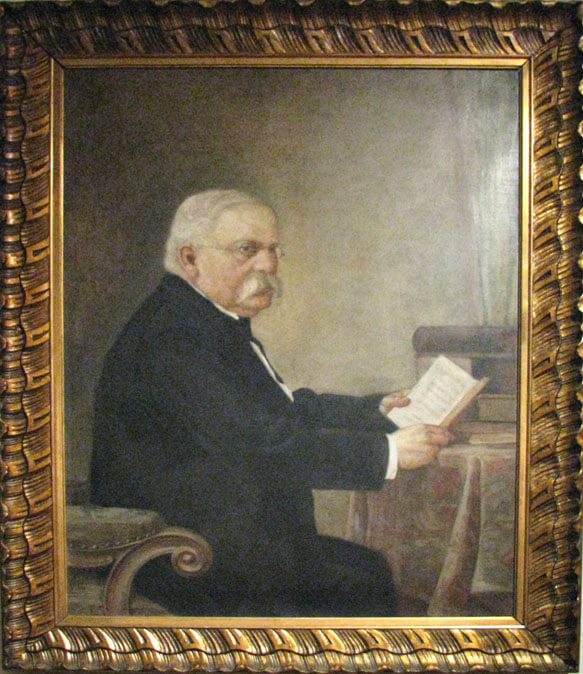
Janko Kamauf painted by Bela Čikoš Sesija, showcased in Zagreb City Museum © Unkown author, Wikipedia
He was the first, but was he the best?
I asked several historians if could they rate and pronounce in their opinion, with regards to the specific contexts, who was the best Zagreb mayor, from Kamauf to Vukičević Pavičić.
Two votes for Većeslav Holjevac!
„I'm not into grading, that's not a historian's task. Our task is to explain and put on the table facts and context of events“, said Ivo Goldstein when I asked him about the best mayor of Zagreb.
Ivo Goldstein may be best known to the Croatian public as a harsh critic of the far-right and the fascist regime of the Independent State of Croatia. As a Historian, he took an interest in various topics related to Croatian history.
At the start of his career, his focus was on Byzantine Empire and Croatian Middle Age History as well as the history of Jews in Croatia. In mid 90's he moved to the various aspects of Croatian history in the 20th century.
He was a professor of various history courses „General History of the Middle Age“ (1984-2003), history of methodology (1991-1996), and many more and today a full-time professor at the Department of History on The Faculty of Humanities and Social Sciences, the University of Zagreb (where he mastered and later completed his Ph.D. thesis at the Faculty of Humanities and Social Sciences, University of Belgrade).
Goldstein's scientific papers received positive acclaim in various countries worldwide, he hosted various projects scientific projects and associations and is very active in Croatian public space when it comes to historical issues that shape the ideas and decisions of current policies in Croatia.
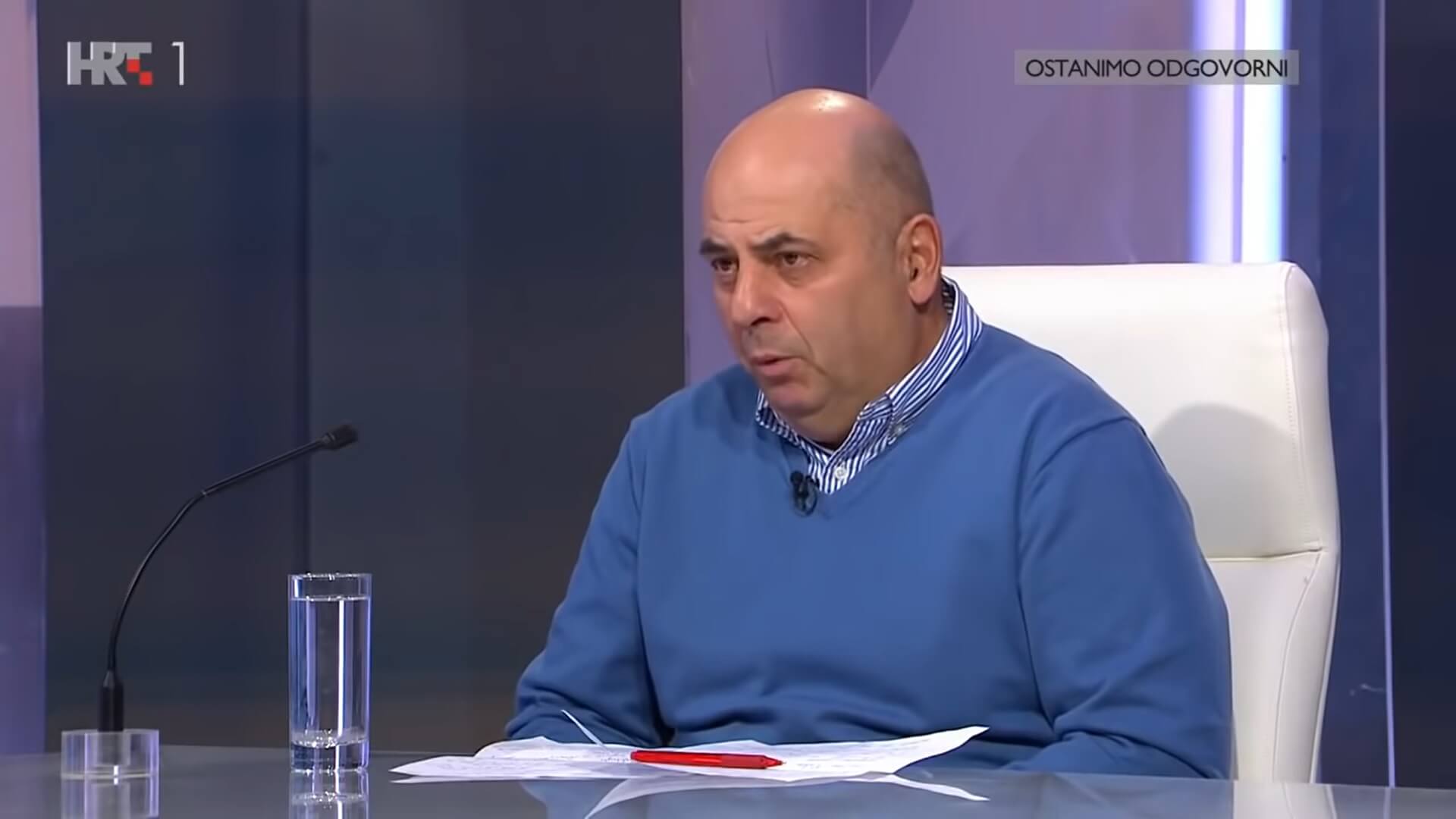 Ivo Goldstein / screenshot HRT Nedjeljom u 2
Ivo Goldstein / screenshot HRT Nedjeljom u 2
Upon explaining the role of historians, professor Goldstein nevertheless didn't mind giving his personal opinion.
„For me, there is no doubt that the best mayor of Zagreb is Većeslav Holjevac“, said Goldstein.
Većeslav Holjevac was the Mayor of Zagreb from 1952-1963 and his eleven-year mandate saw Zagreb develop and spread as the city.
„At that time, Zagreb was the capital city of Socialist Republic of Croatia, which was part of Yugoslavia. Holjevac saw a boost by liberal politics, it was the time of growth and optimism and Holjevac knew how to use it. He was a man of action and used Yugoslavia's opening to the world to Zagreb's benefit“, explained Goldstein.
He added that Holjevac didn't want to be perceived as some sort of transmission of higher state authorities. He didn't hide behind forums and was an independent, free-minded politician, which made him known and beloved among citizens.
„But it made him unloved among the higher power of authority which ended his mandate, although we historically don't know the real reason why Holjevac stopped being mayor“, Goldstein pointed out the mystery which is yet to be cleared up by historians.
The key term of Holjevac's mandate is the General Urban Plan which saw the development of the Most Slobode (Bridge of Freedom), expansion of Zagreb city to south across Sava river, and what today is Novi Zagreb (New Zagreb), as well as building up Zagreb Airport.
„Holjevac knew how to surround himself with good associates who were both dreamers and experts. Holjevac also engaged himself in the projects and his associates felt safe and that he got their back“, explained Goldstein.
The best example of that boldness and visionary approach can be seen in the Zagreb fair which was at that time located at the place of today's Student Centre in Savska.
„The fair needed expansion but was surrounded by railroad tracks everywhere, and the question was how to expand it. There were several options, but Holjevac decided to take it across the Sava river, and it happened. It was quickly constructed, and the first fair on newly build location was the Autumn fair in 1956. and it was the biggest event of its kind in the world back then“, said Goldstein, gladly adding he even had a chance to meet Holjevac as a 12-year-old since the mayor knew his father, an established Croatian intellectual, and politician, Slavko Goldstein.
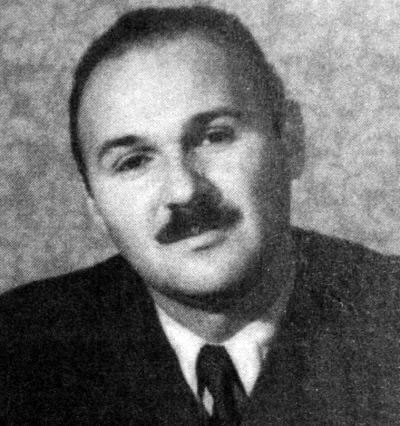
Većeslav Holjevac © Udruga Kameleon / Wikipedia
Hrvoje Klasić was professionally most occupied by Većeslav Holjevac, so he also shares Goldstein's opinion about Većeslav Holjevac.
„In a sentence: Zagreb has never been more developed as it was after Holjevac“, summarized Klasić.
Hrvoje Klasić graduated in 1997 from the Department of History, Faculty of Humanities and Social Sciences at the University of Zagreb. At the same University, he defended his dissertation entitled “1968 in Yugoslavia. Socio-economic changes in an international context”. Since 2003 he has been employed as a professor at the same Faculty and University.
Today, he holds a number of courses related to the world and national history of the 20th century.
Hrvoje Klasić also won the Annual Award of the Association of University Teachers and other Scholars in Zagreb in 2006. That same year he won the Annual Award of Sisak City for the Book „Croatian Spring in Sisak”. He is the author of 3 more books and the author of two documentary series „Croatian Spring“, and “The Independent State of Croatia” produced by Croatian Television. In 2017 The Serb National Council in Croatia gave him an award for the improvement of Croatian-Serbian relations. In 2019 he won the Award for the promotion of peacebuilding, nonviolence, and human rights.
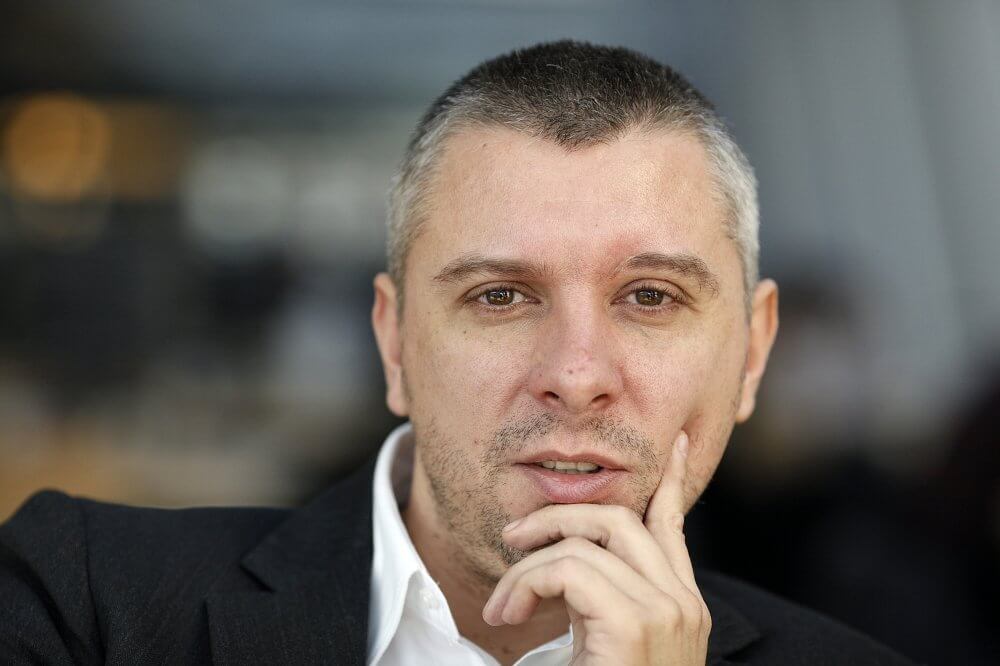
Hrvoje klasić © Hrvoje Klasić
„Most people don't know that Holjevac technically wasn't a mayor, rather he was a president of the City's National Council“, explained Klasić the precision of the functions in the previous Yugoslavian state. He added that while his term lasted from 1952-1963, that is only partially true because he was first appointed to lead Zagreb in 1945.
„In 1945, he was named the city commander who was a military function but he was also in charge of food, traffic, working with several refugees after World War 2 until he gave the control over to civilian bodies“, describes Klasić.
Holjevac then moved on to be the minister of work and traffic in the Social Federal Republic of Croatia. However, at that time, Yugoslavia was going under a change in its political institutions by the self-governing policy which went under parole „factories to workers, cities to citizens“, and as a result, Holjevac 's ministry was shut down. His return to the top position in Zagreb happened without him even knowing.
„As part of self-governing, the Communist Party in Zagreb searched for someone who isn't just going to execute orders from above but instead is an individual that has quality, creativity and will make its own decisions. Holjevac was elected during a meeting he wasn't even present on, and some members of the party were worried is it smart to give Zagreb to a person who is from Karlovac“, said Klasić.
As Goldstein already mentioned, his term lasted over a decade, and Klasić adds that was a very unusual duration at the time.
While Goldstein already mentioned the traffic connections of Zagreb, Klasić said it is very hard to count everything Holjevac built, but he put focus on the industry. Industrial plants of organic-chemical industry, Zagreb heating plant, industrial plants of Pliva pharmaceuticals, Chromos paint company, Kemika, Zvijezda company, Katran, Badel company for alcohol spirits, an ice rink on Šalata, winter pool and gymnastics gyms on Mladost, Yugoton record company, Jadran Film, TV tower on Sljeme, Zagreb drama theatre, an emergency room in Draškovićeva, various elementary and high-schools, and began construction of Vatroslav Lisinski concert hall and more.
„Before Holjevac, there were 40,000 workers in Zagreb. After Holjevac, there was 110,000“, said Klasnić to illustrate the results which made the city the strongest industrial center in Yugoslavia. Apart from industry, Holjevac put a lot of focus on culture and education, as evident by building Workers University Moša Pijade for adult education (today's Public Open University Zagreb) and culture.
Holjevac's „Jump over Sava“ was done on the one hand to prevent interventions in old Zagreb, and on the other, the organizational construction of Novi (New) Zagreb saw the workers live close to the newly built factories.
As Goldstein already referred to Zagreb Fair as perhaps the most significant project of Holjevac's mandate, Klasić added that the unique geopolitical position of Yugoslavia as the bridge between east and west, thanks to the non-aligned movement, made the fair a key place worldwide.
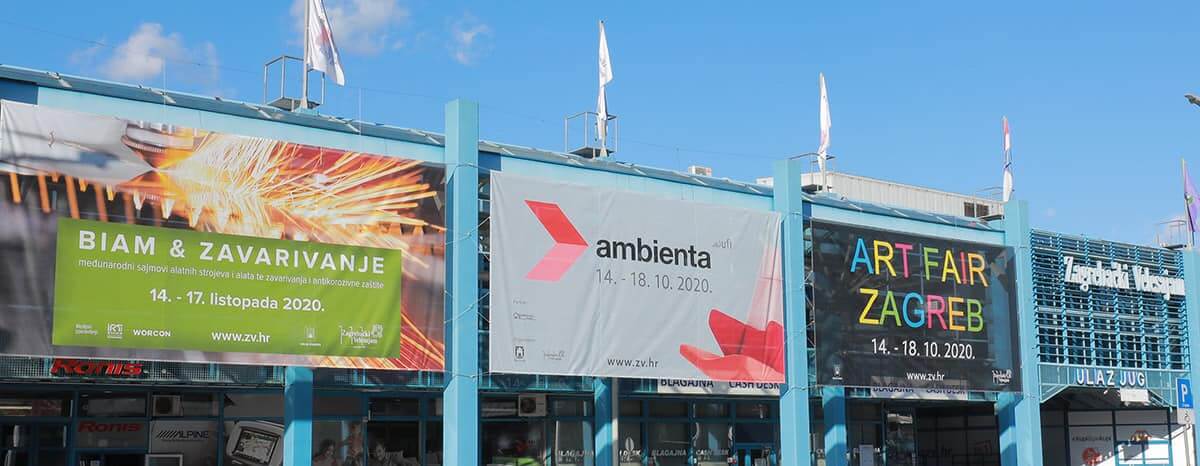
Southern entrance of Zagreb Fair in 2020 © Zagrebački Velesajam
„The fair was not just important for holding exhibitions, but for making deals and signing contracts as well. Given Belgrade was the capital of Yugoslavia, there were pressures to have such a fair there, and there were even boycotts from Belgrade to Zagreba Fair events. However, Holejvac being both persistent and enjoying support by the Yugoslavian president Marshall Josip Broz Tito, managed to keep this significant place in Zagreb“, explained Klasić.
When asked about resentment of other politicians, and the unclear mystery of concluding his mandate, Klasić said he had a chance to look at archives about Holjevac while working on an exhibition about him, and he feels that the situation is much simpler.
„Holjevac basically left due to the same politics that got him to be the mayor in the first place. The Self-Governing model started descending to the lower levels of the system and started searching for creative people. In 1963, a new constitution was brought that further developed the political system to give City Assembly more power accenting the community governing Zagreb. Holjevac's president of City's National Council title has shut down, and the president of Assembly became the first man of Zagreb.
Rotation of politicians as well as limited mandate time was arranged too“, explained Klasić.
He added, however, that it is problematic that an experienced, capable, brave, and brilliant man like Holjevac wasn't put to better use after he stopped being mayor and played bigger roles in Yugoslavian political life.
There isn't the best, only good and bad mayors
Unfortunately, other historians, I contacted (and of course, I couldn't contact every single one, who knows who else might be interested to participate), didn't respond to my inquiry. While Ivo Goldstein explained rating mayors isn't historian's job, Stevo Đurašković, professor at the Faculty of Political Sciences in Zagreb, further elaborated the problem of my question.
„I'm not a fan of such an approach to the topic like it's a miss pageant. In Zagreb's history (as in good portions of cities around the world). There were several great mayors, again, each in its own historical context“, explained Đurašković.
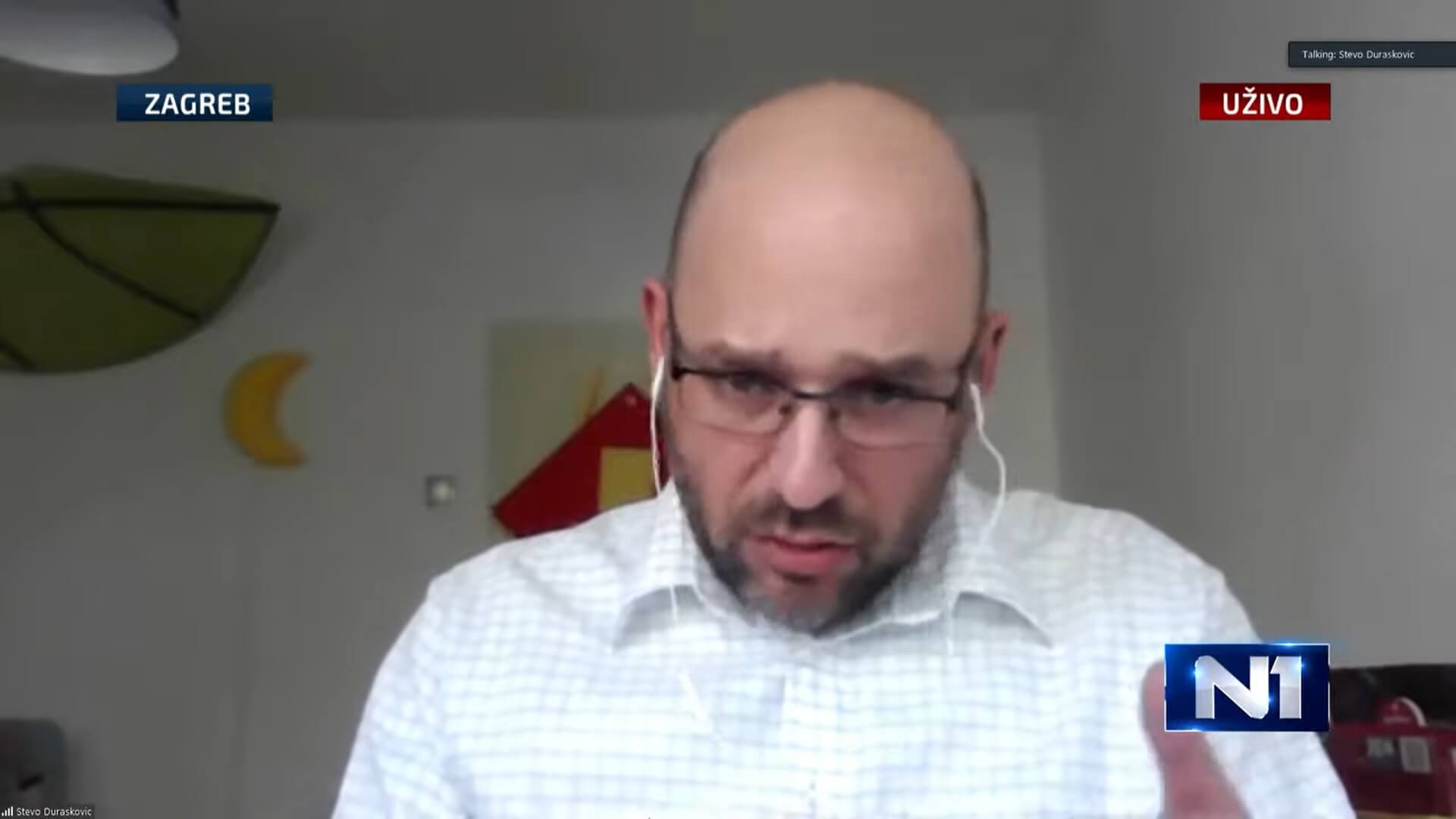
Stevo Đurašković, screenshot / N1
Stevo Đurašković is an Assistant professor at the Faculty of Political Sciences, University of Zagreb, where he teaches courses in politics of history and Croatian history. He received his Ph.D. in Political Science from the Faculty of Social Sciences at the University of Ljubljana and his MA in Central European History from the History Department at the Central European University, Budapest. His research interests include the politics of history, intellectual history, and national identity-building processes in East-Central and Southeastern Europe. Recently he published the book The Politics of History in Croatia and Slovakia in the 1990s (2016). Participated in several international projects, including “Identity Reader: Regional Identity Discourses in Central and Southeast Europe, 1775-1945” (CAS, Sofia). He is a member of the editorial board of the Cultures of History Forum (Imre Kertész Kolleg, University of Jena). In 2009/2010. He was a Ph.D. research fellow at the Faculty of Economic and Social Sciences, Comenius University, Bratislava (CEEPUS grant, Visegrad Fund grant).
In other words, an expert in his respective field with a valid and knowledgeable opinion.
„Milan Amruš and Većeslav Holjevac were great mayors. How to determine if Amruš's development of pre-war Zagreb is greater than Holjevac's post-war development of Zagreb?“ concluded Đurašković his decline to comment who would be the best mayor of Zagreb.
Speaking of Amruš, he was Zagreb mayor in two separate mandates, the first one lasting from 1890 to 1892 and the second from 1904 to 1910. Lice Grada reports that some of the accomplishments in Maruš terms include electrification of the city, and building up Munjara Power Plant (in 1906 and 1907). Under Amruš's mandate, the website continues, horse trams were replaced by electric trams in 1909 and new tram lines and the expansion of the previous one from Ilica to Topnička Barracks were constructed. In addition, 1890 saw lower and upper Zagreb connected by a funicular.
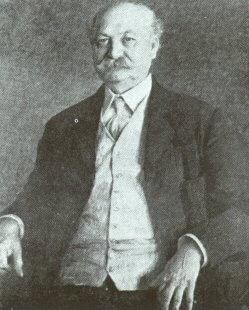
Milan Amruš © Unknown author Wikipedia
Đurašković also added in his decline that Pero Pirker is often „a forgotten mayor“, and Klasić mentioned him as the Holjevac's successor. Mentions of Pirker are also noted on Nacionalne Manjine (National Minorities) site that declared Pirker as a noted Zagreb mayor.
"There is no doubt that Pirker is one of the most capable, most successful, and in its time an extremely popular mayor. But it is stunning that for political reason, considering he was one of the established champions of Croatian Spring in 1972, his work was completely silenced not only until the 1990s but also later“, wrote Goran Beus Richembergh for Nacionalne Manjine.
It's worth noting that the Croatian Spring was a reawakening of national identity which paved the way for the country's independence and the dissolution of Yugoslavia, on which TCN reported on its 50th anniversary earlier this year.
In Pirker's time, the Great flood that sank Zagreb in 1964 was truly the historical challenge of his mandate.
„It was a natural disaster of great extent, and the entire previous state (Yugoslavia) was involved in sanitation and help was arriving from all over the world. But, the biggest responsibility for the coordination of help, sanitation of the damage, taking care of the casualties, and building new homes was carried out by Zagreb's authorities, lead by Pirker who showed to be a skillful manager and successful in various projects“, described Beus Richembergh.
Amruš had the challenge to electrify Zagreb to keep up with other European capitals, Holjevac had the challenge of restoring and developing the city post WW2, and Pirker had the flood.
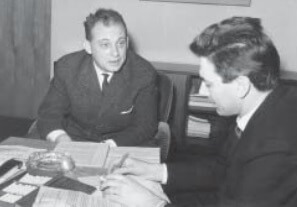
Pero Pirker (on the left) © Croatian Journalist Association / Wikipedia
Both corona and earthquake, as well as the mess suspected to find post-Bandić, are all just another challenge in the history of a town that is used to be challenged and always dancing victory laps.
While Đurašković explained comparisons of what was the most difficult challenge and who was the best mayor make no sense, Goldstein and Klasnić presented their pick. But, as respectable historians they are, they emphasized that it is their opinion and not an empirical fact, even though their arguments are both knowledgable and well explained.
In the end, politics should be about making people's lives better and not about chasing crowns or historical acknowledgments. And as Zagreb really needs a quality leader, the only logical conclusion is: may the best candidate wins, and may purgers recognize the best man or women for Zagreb to once again wave the middle finger to the aftermaths of the recent crisis as it overcomes them.
Learn more about Zagreb on our TC page.
For more about history in Croatia, follow TCN's dedicated page.
After Floods, Earthquake, COVID-19, The City Is Not Broken: This Is Zagreb!
July 27, 2020 – OPINION: Marc Rowlands downplays the doom and gloom, claiming it will take even more than 2020's disasters to permanently damage Zagreb
International readers must think the city has fallen. After the triple hit of COVID-19, the strongest earthquake in a century, and last weekend's floods, they must imagine the people of Zagreb to be largely underwater, the tips of their toes resting on rubble, struggling to breathe above the waves through their surgical masks.
Their suspicions would only be justified if they're reading the comments sections of the coverage. “Oh, whatever next?”, “What will become of us?”, “May God save us!”, “First an earthquake, now snow! It's the end of the world!”, “It's because of global warming, I told you years ago. Now, not even my bitterness can save us”. Jadni smo (poor us).
That's because there are two types of people in this world; the doom-mongers - useless pessimists who sigh, tut, and briefly sympathise while reading the news, and then there are the positive thinkers who actually get up off their ass and help out. Sadly, the internet is full of the former. Thankfully, Zagreb is full of the latter.
Take for example Mirna Mrčela, who rescued a man from a sinking car on Friday night. Did she stop to worry about the implications for her or for the sunken city before diving into waters on Miramarska street to save him? She did not.
What about the young Zagreb residents who gave up their free time to help rebuild people's homes following this year's earthquakes? Or those who volunteered to help move children from the damaged wards of a hospital? What about the thousands of Croats who thought of innovative or compassionate schemes to raise money for those affected? Or the many more who donated? Or those who used their own drones to help assess damage to buildings? Was their assistance delayed by worry and self-pity? No.
Thousands of young people have been gathering outside the Croatian National Theatre at weekends. The real picture in Zagreb © Marc Rowlands
Even aside those who actually helped out, the story of Zagreb in the wake of both the earthquake and the floods has been one of irrepressible resilience, optimism, and joy. Thousands of young people have gathered outside the Croatian National Theatre at weekends simply enjoying to be, and each other. In recent weeks, Ribnjak Park, Zrinjevac Park, and Strossmayer Promenade in the city have come alive with gastronomic events, music, and people enjoying themselves.
On Monday 27 July, as the sun shines brightly above Zagreb, the last remnants of the flood are all but gone. People are at work, as usual, and some tourists can be seen taking tours around Tkalčićeva and the cathedral. No matter what news story comment sections might tell you, this city is open for business. Zagreb has seen much worse than this. And it will take a lot more than rain, earthquakes or, yes, even snow to dampen its spirits.
Heroine Mirna Saved Man from a Sinking Car in Zagreb
July 26, 2020 - At a time when Zagreb is suffering from another catastrophe, the good in people prevails once more. Brave Mirna Mrčela saved a man in a sinking car.
Josip Šimić got stuck on Friday night at an underpass at Miramarska street. As a wild storm roamed and the flood was getting bigger, the water almost completely covered Josip's car. "I asked people whether or not they had called someone to help, and they said they had," said Mirna for Dnevnik Nove TV. "But I couldn't just stand there and watch. So I took my shoes and jacket off, tied up my dogs, and went for him," said Mirna, who knew that every second mattered.
Mirna swam to the sinking car, which locked down automatically, so Josip couldn't open the door. "I didn't notice her at first; she appeared out of nowhere," said Josip, who lost his leg prosthesis in this mess. "When she managed to open the door, I gave her my leg prosthesis and climbed onto the top of the car, which wasn't sinking anymore."
While he was waiting for the firefighters to come and pick him up, Mirna swam back with his prosthesis. "I thought I just needed to swim, but you don't feel comfortable when entering cold water," said Mirna.
For the ones who are wondering how Josip ended in this situation, he said the road line was no longer visible. "The wet road looks the same as the surface of the road; you do not know if a hole of 2 meters of water will open suddenly. I started braking right away," said Josip.
Both Mirna and Josip are fine now, grateful for how the situation unfolded. Josip had a chance to say "thank you" to Mirna on national television, and he took it.
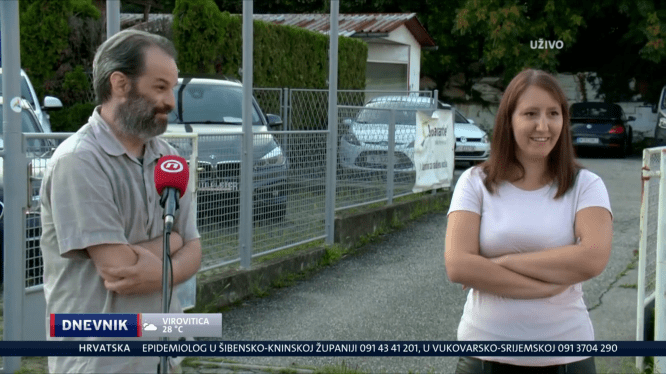
Zagreb Mayor Pledges Aid to Residents in Repairing Storm Damage
ZAGREB, July 25, 2020 - Zagreb mayor Milan Bandic has pledged aid to residents in repairing the property damage caused by a severe storm that hit the capital on Friday evening, when nearly 100 litres of rain per square metre fell in 10 hours, leaving many properties flooded.
"The damage will be compensated for, but what cannot be compensated for is a human life. I regret to say that one young life was lost," Bandic told a press conference on Saturday. He announced that he would visit the family of a 53-year-old voluntary firefighter who died in the line of duty, on Sunday.
The mayor thanked the emergency services for a prompt response. He reassured the residents by saying that the damage would be assessed and that they would be assisted in repairing the damage.
Asked to comment on the fact that he has been the mayor for 20 years and that every time a heavy rain occurs residents see scenes like these, Bandic said that he and his team have done more about the municipal water supply and drainage infrastructure than all the mayors of Zagreb in the last 100 years combined.
Reporters also asked the head of the Department for Emergency Management, Pavle Kalinic, whether the water drainage system could have been damaged by the March 22 earthquake, to which he said that this was yet to be looked into and assessed.
Chief fire officer Javor Lozar said that the city's public fire brigade and about 50 voluntary firefighter associations had carried out over 250 response operations between 9.30 pm on Friday and 11 am on Saturday, involving 180 firefighters. They were engaged in pumping out the water from residential buildings and underground car parks and rescuing people from vehicles and basement flats. Lozar said that there had also been a fire in two flats that were promptly brought under control and no major damage was done.
VIDEOS: Zagreb Battles Big Floods after Storm Rips through Croatian Capital
July 25, 2020 - A severe storm hit western Croatia and Zagreb last night at around 9 pm, causing big floods in the center of the capital.
Index.hr reports that several streets were flooded, including Ilica and Miramarska, Branimirova and Strojarska, but also Britanski trg and the Importanne Center. Numerous cars were trapped underwater or entirely submerged, basements and family houses, shops, cafes were also affected.
Firefighters and emergency services were on the scene all night. They performed more than a hundred interventions, and due to thousands of calls from citizens, all lines (193) were busy during the evening. Thousands of calls from citizens were received, hundreds of buildings were flooded.
Tram traffic was interrupted along Ilica, then from Radnicka towards Zitnjak and from Drziceva, Ulica grada Vukovara to Savska cesta.
Traffic is limited on some roads today, and the underpass in Miramarska is closed to traffic.
"Throughout the night, technical teams were engaged in draining rainwater and repairing the consequences of the thunderstorm.
All preconditions for safe traffic have been created on the public city transport network and there are no difficulties on ZET lines," it was reported.
Warnings for dangerous weather conditions are still in force, reports DHMZ. But lower levels than yesterday. An orange meteorological alarm is in force for the Zagreb area.
It will be partly cloudy today, with rain or showers, mostly in the first part of the day. Wind mostly moderate north and northwest. The highest daily air temperature is around 25°C, reports DHMZ.
It will be partly sunny tomorrow, though fog is possible in the morning. There will be light winds. The lowest temperature will be around 16, and highest daily from 28 to 30°C.
To read more about news in Croatia, follow TCN's dedicated page.


